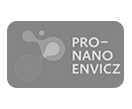International Mobility of HIPC´s Researchers

Project Name: Theoretical modeling of redox properties and their influence on reactivity of polynuclear centers in non-heme metalloenzymes and biomimetic complexes
Acronym: ATMredox
Grant Provider: Czech Republic - Ministry of Education Youth and Sports as the managing authority of Operational Programme Research, Development and Education
The grant was awarded on the basis of a request for support on August 29th 2018 under the call 02_18_070 International Mobility of Researchers – MSCA-IF II (MEYS, OP RDE)
Operational Programme: Operational Programme Research, Development and Education
Priority Axis: PO2 – Development of universities and human resources for research and development
Project Registration Number: CZ.02.2.69/0.0/0.0/18_070/0010490
Total Project Costs: CZK 3 266 208 ,00
ESF Co-financing Rate: 75,9 %
Project Duration: 1.1.2019 - 31.12.2020 (24 months)
Annotation:
The reactivity of polynuclear metal complexes like Fe2S2- and Fe4S4-dependent radical enzymes, relevant to medicine and environmental science, is not fully-understood due to their complex electronic structure. The accurate prediction of redox potentials in such targets remains elusive and calls for the development of methodologies accounting for variables such as solvation, protein environment and electronic structure.
The present project is aimed to fill that gap, contributing to the general understanding of properties of Fe4S4-dependent radical enzymes and their selectivity through a thermodynamic analysis recently proposed by our team (Proc. Natl. Acad. Sci. USA, 2018, 115, E10287-E10294) that allows the correlation of redox and acidobasic properties with H-atom abstraction reactivity. This holds a great potential to be translated into functional and stable bioinspired catalysts, attractive for the pharmaceutical industry for the efficient production and derivatization of drugs as well as in the fields of green catalysis and bioremediation.
Main Objective:
Development of well-balanced, experimentally calibrated and reproducible methodologies to predict the effects of electron structure on reactivity and selectivity of Fe2S2 and Fe4S4-dependent radical enzymes. These calibrated protocols will be used for the investigation of electron-transfer initiated processes where S-adenosyl-L-methionine (SAM) is activated for subsequent and selective H-atom abstraction from model substrates containing C−H, N−H and O−H reactive bonds.
The strategies to achieve this goal are:
-
Development of computational protocols for the calculations of thermodynamic descriptors of selected polynuclear transition metal complexes including:
-
Synthetic analogues of the mitochondrial membrane protein mitoNEET (containing the Fe2S2 cluster).
-
Ferredoxin (Fd), high-potential iron-sulfur protein (HiPIP) and biomimetic analogues (all featuring the Fe4S4 cluster).
-
-
Investigation of the reductive cleavage of the SAM cofactor upon electron transfer from the Fe4S4 cluster to understand the factors leading to formation of the [5’-C]-deoxyadenosyl radical intermediate (5’-Ado•) vs a recently observed organometallic species, named Ω intermediate.
-
Modeling H-atom abstraction (HAA) activation of a substrate in selected radical SAM enzymes.
The project is co-financed by the European Union.















